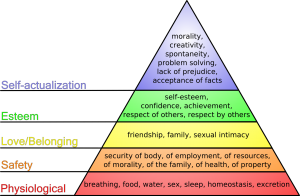Storytelling Techniques for Business: You are as Differentiated as Your Story
Note: this article is an updated version of a previously published piece.
Humans are wired for stories; we’re storytelling animals. Here’s where stories pay dividends: according to recent Stanford research, stories are remembered up to 22 times more than facts alone. So if you aren’t telling stories in your content, you should be. You are as differentiated as your story.
Story-Driven Content and Differentiation Through Storytelling
The most important thing any organization can do is become a storytelling organization. This means elevating your product or service discussion to one that focuses on the human needs of your audience. Your best stories are not about your products or you. Your goal is to tell a bigger story that makes your customer the hero. Features evolve rapidly, as product lifecycles are becoming shorter – especially in technology. Moreover, the way customers are buying – especially in b2b — has changed. According to Forrester (Oct 2012), the average b2b customer is 66% – 90% along in the buying journey before he or she reaches out to the vendor. Customers are doing their own research and they’re asking the most important question: How will your product or service make my life better?
Get Started, Then Adapt
One of my favorite models for storytelling comes from improvisation – a powerful, real-time way of co-creating stories. It’s also that classic and fun universal bed-time story model that you’ll recognize. I’ve used this model as an improviser on-stage and as a marketer.
What I love about this particular model, called the ‘7-step story’, is that you can easily adapt it. This approach covers all the key elements of a story: the protagonist/hero, the challenge /conflict (villain), the climax, the resolution, and the ending/change. This model works for just about every type of story a company can have.
Here’s the model for told through the lens of your customer:
Once upon a time, was doing….
And every day, he or she did …
Until one day, he or she discovered …
And because of that, he or she could
And because of that, he or she could
And because of that, he or she could
And every day since that day, he or she uses because it enables him or her to …
Show How Customers’ Situations “Change”
Users don’t buy ‘value propositions’; they buy something bigger that helps them in their lives. The most important part of a story, therefore, is showing how the hero/protagonist of the story changes. What can your customer do now because of your product or service that he/she could not do before? That’s story rocket fuel. Your product or service must make your customer look good – they are the hero; your service becomes the important, supporting sidekick!
What people really buy, then, is hope of improvement. While saving money can be a valid economic ‘value proposition,’ more often there are much more important human motivations driving customer purchasing behavior: enhanced credibility and reputation, recognition, security, etc.
And, while not every company is saving lives, you don’t have to be in order to claim real value. You must aim for credibility, however. Great stories are built on truth. And if you are in need of inspiration, ask customers, “How did we make your life better?”
A brief example applying the model to ‘Company X’:
Once upon a time, Bob, a company owner, kept numerous files in a number of locations.
And every day, he updated information in many places because he did not have the data in one secure place to work remotely. It was a huge pain – taking time and resources.
Then one day, a friend introduced Bob to Company X’s cloud-based data services.
Because of that, Bob could securely access data anywhere, anytime wherever he was.
Because of that, he was able to get more work done quickly and easily and without worrying about compromising data security.
And every day since that day, Bob’s organization uses Company X because the ability to access data ‘anytime anywhere’ securely has reduced his risk, ensured data freedom, and freed up his time to do what does best: run his business and spend time with his family – not with his IT department.
People Buy Change, Not ‘Products’
Your product story is always about the people who use what you sell and how their lives are better. Products come and go; a deep commitment to changing customers’ lives for the better – something bigger than any company – is a purpose that provides meaning.
What’s your storytelling model? How has it worked for you? Let me know!



